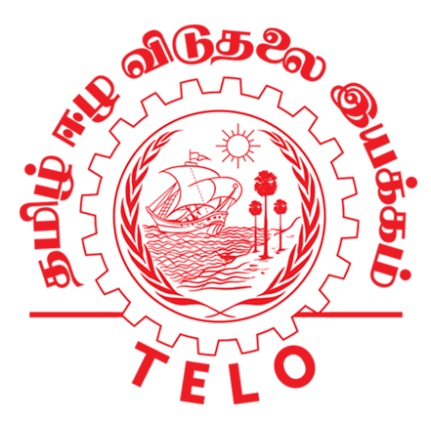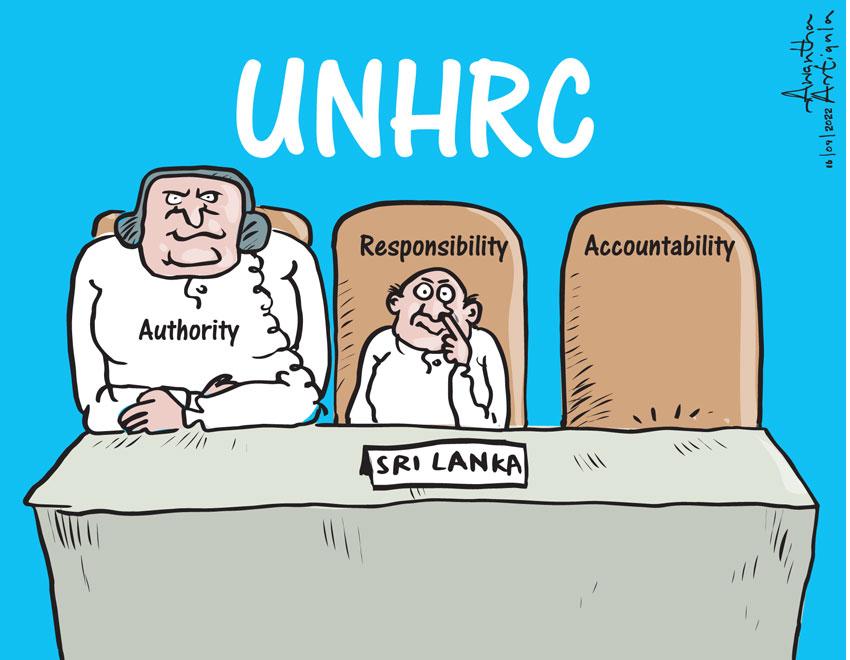They lie buried in numerous mass graves, all evidence of Sri Lanka’s murderous recent past which has been punctuated by multiple civil conflicts.
Whatever remains is evidence of Sri Lanka’s grisly history of the extrajudicial executions of rebels in both Northern and Southern insurrections.
Most of the bodies remain in mass graves that stretch from Chemmani and Duraiappah Stadium in Jaffna to burial sites in the Colombo and Matale Districts and the Southern and Central Provinces.
The dead could be anyone; captured rebels, those caught in crossfires and others who were deemed to be “inconvenient,” according to a report titled ‘Gotabaya Rajapaksa’s War Time Role’ released by the International Truth and Justice Project (ITJP) on 17 January 2024.
A horrific record
Sri Lanka’s recent blood-soaked history is replete with mass killings and many “disappearances” from the various incidents during the insurgencies of the JVP as well as the Tamil separatist war.
The activist group Journalists for Democracy and affiliated organisations claim that at least 32 mass graves have been identified across the island. A report published in Groundviews in January said these graves “dotted across the country that hold the remains of not just the casualties of the civil war but also those who disappeared during the two JVP uprisings in 1971 and from 1988 to 1989.”
A 1999 United Nations study noted that Sri Lanka has the second-highest number of enforced disappearances in the world with around 12,000 people missing after being detained by government Security Forces. Figures vary with Amnesty International reporting that the number of disappeared persons could be as high as 60,000.
There is no official government figure.
Evidence against GR
Now, fifteen years after the separatist war in Sri Lanka ended, mounting evidence has emerged against former President, Gotabaya Rajapaksa, for his pivotal role in the commission of war crimes and crimes against humanity during the civil war, say Human Rights lawyers in this new report.
Rajapaksa figures in two serious passages of time where suspected cadres of the Janatha Vimukthi Peramuna were killed at Matale in the 1988-89 period and LTTE cadres and civilians on the frontlines of Nandikadal which proved to be the final battle of the Eelam War.
The ITJP report quotes its Executive Director Yasmin Sooka as saying if Sri Lanka “is serious about dealing with its violent past, the litmus test is to hold (former President) Gotabaya Rajapaksa criminally accountable for war crimes and crimes against humanity.”
The report presents detailed evidence connecting the former President when he was Secretary to the Ministry of Defence to numerous massacres of civilians. Although not the army commander, nor Chairman of Joint Chiefs of Staff, Gotabaya had command and effective control of the security forces during the Civil War as the Defence Secretary and the younger brother of then President Mahinda Rajapaksa.
The ITJP report says the then Defence Secretary Rajapaksa had “contemporaneous knowledge of the violations of international humanitarian law and international criminal law being committed, and failed to take any steps to prevent them, or to hold those under his command accountable. He and successive Sri Lankan governments have had countless opportunities since the war ended to initiate credible investigations into allegations of gross human rights violations and to establish prosecutions. Instead of allowing the truth to come to light, Gotabaya and his successors have perpetuated denial of the complicity of the security forces in these violations, rewarding and protecting the alleged perpetrators.”
The 104-page document examines evidence of Rajapaksa’s involvement in and knowledge of attacks on the No Fire Zones set up to protect civilians, his failure to prevent and investigate summary executions, enforced disappearances, torture, rape and sexual violence, arbitrary detention and the denial of humanitarian aid to civilians.
Individual stories that were leaked at the time gave credence to these incidents.
One was the evidence of the killing of LTTE Leader Velupillai Prabhakaran’s younger son Balachandran. The boy, according to some reports, had been escorted to the Sri Lanka Army lines by an LTTE bodyguard at Mullivaikkal. Photos purported to have been taken at that stage show the boy wrapped in a Sri Lanka Army issue sarong eating a biscuit behind the Sri Lanka Army lines. A second photo shows him dead at the same location, his body riddled with bullets.
Another set of pictures was that of the LTTE’s TV icon Issapriya whose image was widely circulated. There were unconfirmed reports that she had been sexually assaulted along with other young women who had been captured as the LTTE unravelled. That is followed by another picture of her corpse shot at close range.
Eventually, the Sri Lankan government during President Maithripala Sirisena’s tenure acknowledged that some 65,000 persons were missing and granted close surviving relatives rights to manage their properties, the ITJP report states.
Matale Mass Grave
Rajapaksa was the military Coordinating Officer for the Matale District in 1989 when the area was rocked by the so-called Deshapremi Janatha Vyaparaya a JVP offshoot. He was a Lt. Colonel at the time.
In December 2012, reports emerged that a mass grave had been found in the grounds of the Matale Hospital.
Accusations were made at the time that the remains unearthed were that of JVP cadres who had been captured and allegedly killed during the insurrection, a claim the party repeatedly made.
No government however pursued an investigation into the discovery because politics got in the way; after all the UNP was in power when the killings were supposedly carried out and the officer responsible, Gotabaya, was the brother of Mahinda Rajapaksa at the time, a prominent leader in the SLFP.
The government of the day meanwhile claimed the bodies were of victims of a landslide in the 1950s.
However, there was no proper investigation to prove which theory was factual.
The ITJP report also contains the names of former Army Commander, Lt Gen Shavendra Silva and others who are seen as Gotabaya loyalists in the Army. The report also claims that Army top brass, other than Field Marshall Sarath Fonseka, who was Commander of the Army at the time the civil war ended, had close personal connections to Rajapaksa.
These incidents, however, are not the only horrific events of our island nation’s history; abductions and disappearances of young men, allegedly by members of the armed forces, the massacre of a group of Buddhist monks at Aranthalawa, the killing of pilgrims at Anuradhapura, the latter two by the LTTE, random killings of public servants and others by rebel groups, and more recently the Easter Sunday bombings, the list goes on. And the powers that be, govern with impunity.
So, it is unlikely that the relatives of the victims will find closure until justice is served and those whose hands are bloodstained are held accountable for their actions.





